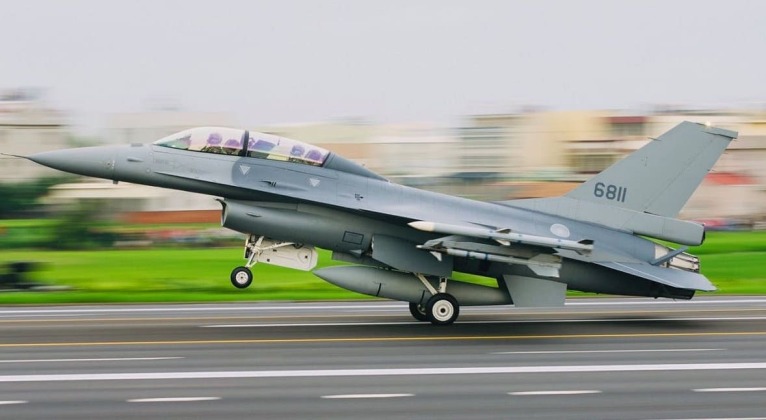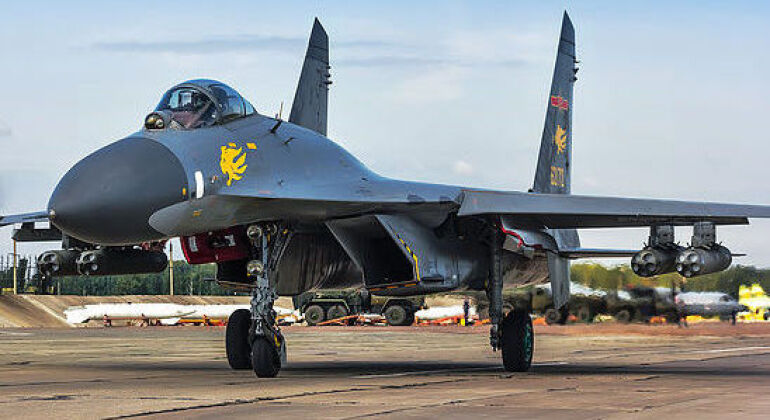The F-16 Fighting Falcon is by far the most widely used Western fighter class in the world, with more than 4500 having been built since the 1970s and over two dozen air forces operating or having operated them. Although the U.S. Air Force ceased orders in 2005, and several countries have begun to draw down their fleet sizes as the Falcon increasingly borders on obsolescence, the fighter nevertheless remains in production for export to lower end clients unable for political or economic reasons to field the F-16’s fifth generation successor the F-35. In contrast to its status today, the F-16 was a much sought after asset during the 1980s and 1990s in particular when its capabilities were considered state of the art, despite it having been designed as a lighter and cheaper counterpart to the heavyweight F-15 Eagle with an emphasis on low operational costs and maintenance needs. At the time one of the most controversial F-16 sales would see the Falcons deployed to Chinese territory, with the Republic of China Air Force having sought to acquire the aircraft since the 1980s and gaining permission to acquire 140 airframes the following decade to form two large fighter units. The circumstances under which this sale was made related closely to the status and international recognition of the Chinese state and the nature of the Chinese Civil War which at the time had been technically ongoing for over half a century.

The conclusion of the Chinese Civil War on the Chinese mainland in 1949 saw the People’s Republic of China (PRC) declared in Beijing in October that year, while the losing side led by the Guomindang party the Republic of China (ROC) had withdrawn to outlying islands. These were set to be overtaken and brought under the PRC in 1950, and it was only the intervention of the U.S. Navy in June 1950 to place the remnants of the Republic of China under American protection which prevented a final end to the Civil War, with the ROC basing their new capital in Taipei until their plans to recapture the mainland could be seen through. The resulting emergence of two Chinese governments on opposite sides of the Taiwan Strait saw the PRC armed by the Soviet Union and the ROC by the United States to fight multiple battles throughout the 1950s, with CIA and U.S. Air Force aircraft participating heavily on the side of the Taipei-based government. The Sino-Soviet split in the early 1960s, however, cut the PRC’s access to modern fighter aircraft and air defence systems which ensured a distinct advantage for the ROC, which was often a priority client for the latest American aircraft and weapons such as the U-2 spy plane, F-101 fighter and AIM-9 air to air missile.

U.S. arms sales to the Republic of China declined considerably from the late 1970s as Washington recognised the People’s Republic of China based in Beijing as the sole government of all China – including outlying islands such as Taiwan where the ROC was based. The U.S. would deny the ROC access to a number of new weapons classes to maintain good relations with Beijing, but supported efforts to develop an indigenous Republic of China fighter class – the F-CK Ching Kuo – which had fourth generation capabilities comparable to the American F-20 Tigershark. The end of the Cold War in 1989, and reduction in the importance of ties to Beijing as a counterweight to the Soviet Union, opened new opportunities for the United States to supply arms to the Republic of China. Taipei’s perceived need for such assets grew in the 1990s as the PRC negotiated the acquisition of new fourth generation fighters from the Soviet Union – namely Su-27 Flankers which would be by far the most capable in the region when first delivered in late 1991. At the time the ROC’s F-5E/F third generation fighters had been seen to provide a considerable advantage over the PRC’s ageing fleet, but the Su-27’s deployment across the Taiwan Strait led Washington to assent to the sale of F-16s. The ROC’s ability to modernise its fleet was still limited, however, with only lower end F-16A/B Block 20 variants delivered after they had long since been superseded. It did not gain access to heavier fighters from the same weight class as the Su-27, namely the F-15 or F-14, meaning while the F-16 brought it to a technologically near peer level the small and light aircraft were still significantly outmatched.

Arms sales to the Republic of China government based on Taiwan have been highly controversial, as while Taipei has continued to claim to be the sole representative of the entire Chinese nation, including Mongolia which it considers part of China, it has no recognition at the United Nations and is not recognised by the overwhelming majority of UN member states including the United States. Arms sales to the ROC have thus been widely equated with sales to a non state actor. The F-16 will continue to fly for the Republic of China Air Force for decades to come, as a legacy of the still technically ongoing Chinese Civil War, with Taipei having ordered a further 66 F-16s in 2019 under an $8.2 billion contract. This represented the first order for new ROC fighters in over 20 years.
Thew newly ordered F-16 Block 70/72 variants will be supplemented by a program to modernise existing ROC Air Force F-16 Block 20s to a similar avionics standard under the F-16V program. Although a significant upgrade over the F-16 Block 20 – a 1970s warplane – the new Falcons are still far short of the fifth generation F-35s the ROC Air Force initially sought to acquire, and are far from a match from the PRC’s own new fighters such as the fifth generation J-20. The propensity of ROC pilots to defect to the PRC has been one reason why more capable jets than the F-16 have not been supplied.
Had the U.S. Navy not been deployed in 1950 to preserve a remnant of the Republic of China’s power on Taiwan, the F-16, F-5, F-104 and many other American fighter classes would never have seen service in Chinese hands as the Chinese nation would have been unified under the Beijing based People’s Republic of China that year. Opportunities for F-16 sales, and the F-16’s presence at airfields in China, is thus a direct result of the Chinese Civil War’s ongoing nature. Whether the ROC will receive any further fighter classes will depend on both the state of Sino-U.S. relations and on how long the division of China between two rival governments will continue,
